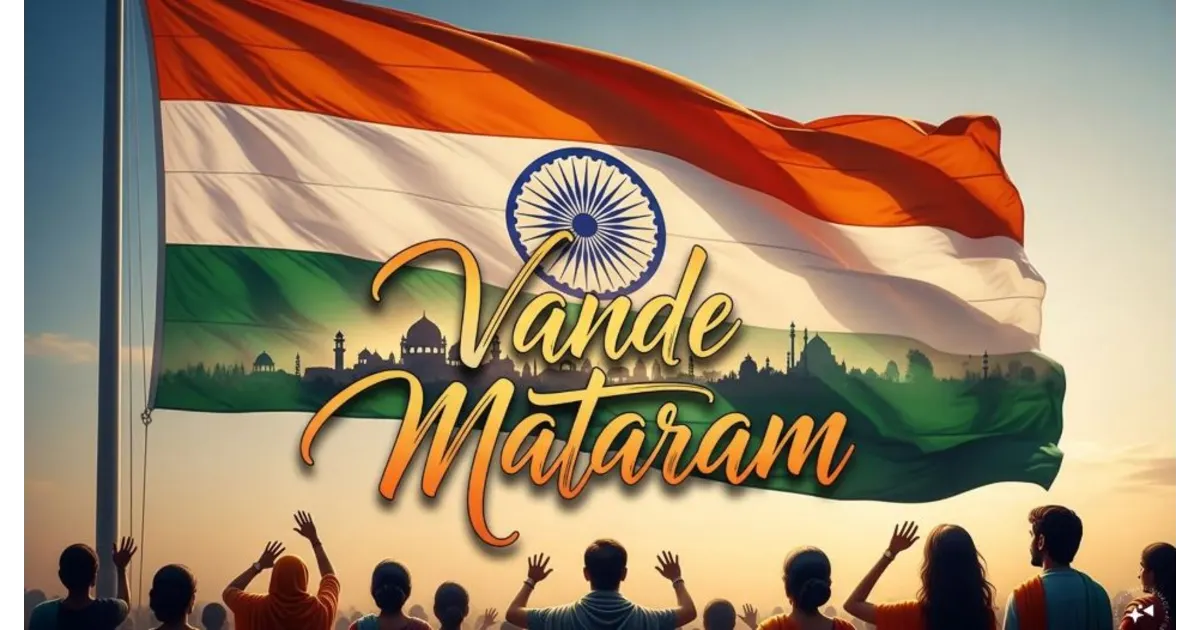
The Heartbeat of a Nation
‘Vande Mataram’ is far more than a phrase; it is the enduring pulse of India, echoing through its history for over 150 years. This sacred anthem has been a beacon of national awakening, igniting courage in the oppressed, restoring identity in times of despair, and ultimately shaping the path to freedom.
Beyond Boundaries: A Song for All
This song transcends power, caste, creed, or region. It embodies India’s collective consciousness, reflecting millennia of civilization, culture, and spiritual wisdom. It reminds citizens that a nation is not merely land but a nurturing mother whose respect, devotion, and loyalty define true identity. Through ‘Vande Mataram,’ patriotism emerges not as political rhetoric but as devotion, discipline, and selfless service to the motherland.
A Cultural and Spiritual Renaissance
Composed by Bankim Chandra Chattopadhyay in his novel Anandamath, ‘Vande Mataram’ arose during a time when British colonial rule threatened India’s spiritual and cultural identity. Inspired by the Sanyasi Movement, it was more than a song; it was a clarion call for freedom. The verses Sujalam suphalam/ Malayajashitalam/ Sasyashyamalam/ Mataram awakened the nation’s dormant spirit, invoking pride, courage, and unity.
The Song of Revolution
During the 1905 Bengal Partition movement, ‘Vande Mataram’ resonated in schools, rallies, and streets, uniting citizens in the dream of independence. Revolutionaries carried it to the gallows as their final chant. When Rabindranath Tagore lent his voice, the melody intertwined devotion and duty, inspiring countless Indians to dedicate themselves to the yajna of freedom, lighting the dawn of Independence.
Revered by the Architects of India
After independence, ‘Vande Mataram’ became a symbol of India’s soul, continuing to evoke pride, unity, and reverence across generations. Its timeless essence transcends eras and geography, celebrating Bharat Mata as the living embodiment of civilization, culture, and eternal consciousness.
Reflecting on 150 Years
The 150th anniversary of ‘Vande Mataram’ calls for introspection. Are we embodying the spirit that inspired countless patriots? Do our lives reflect devotion, discipline, and dedication to the nation? Criticism that seeks to confine or diminish its universality stems from ignorance, undermining the unity and cultural heritage the song represents.
A Song for Every Indian
‘Vande Mataram’ does not belong to a single religion, community, or sect; it belongs to the Indian soul. It is a hymn of reverence to the motherland. Recognizing this, the Constituent Assembly of India adopted it as the national song on January 24, 1950. As Prime Minister Narendra Modi has stated, this song unites the nation, instilling devotion, strength, and pride, inspiring generations to envision a self-confident India.
The Spirit of Unity and Progress
As India strides forward in self-reliance and development, the same spirit ignited by Chattopadhyay continues to guide the nation. Under the mantra of Ek Bharat, Shreshtha Bharat, ‘Vande Mataram’ reinforces unity amid diversity, reminding citizens that India’s strength lies in its harmony of languages, cultures, and traditions.
Living the Song Daily
‘Vande Mataram’ is more than a salute; it is a commitment to protect, prosper, and honor the motherland. Whether a farmer in the fields, a soldier at the borders, a teacher shaping young minds, or a youth innovating for glory, the essence of this song lives in every act of devotion. For the younger generation, embracing this spirit ensures that patriotism remains a continuous, active force even in a rapidly changing world.
A Lifelong Devotion
This anthem teaches that the motherland is a living, nurturing force. To honor her is among life’s highest duties. ‘Vande Mataram’ reminds every citizen that true patriotism is not fleeting sentiment but a lifelong expression of love, discipline, and service.




